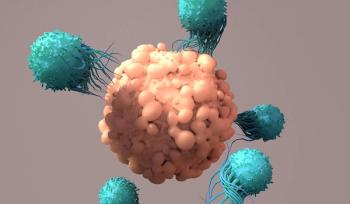
- BioPharm International-06-01-2019
- Volume 43
- Issue 6
GLPs: Better Data Access Needed to Improve Compliance
Stuart Jones, regulatory quality assurance professional in good laboratory practice (RQAP-GLP) and director of quality assurance at PPD Laboratories’ Bioanalytical Laboratory shared GLP best practices with BioPharm International.
Like many crucial regulations, good laboratory practices (GLPs) were enacted in 1979 after FDA observers found serious problems in documentation, training, and data integrity at a number of US research labs (1). Decades later, regulators still find deficiencies in the way that some companies’ labs approach data integrity, training, and standard operating procedures (SOPs).
Another major problem that can be traced to GLPs is reproducibility. According to the Global Biological Standards Institute (GBSI), 50% of published preclinical research cannot be reproduced, a problem that results in product development delays and wastes $28 billion/year in the US alone (2). Culprits were found to be biological reagents and reference materials, study data, and lab protocols.
A number of tools are being developed to help lab scientists capture and use more data, for example, LabStep, an interactive digital platform designed to help scientists get around some of the deficiencies of electronic lab notebooks (ELNs) and refer directly to protocols, SOPs, and other important data (3). LabTwin is introducing a new voice-activated lab assistant at BIO 2019 in Philadelphia in June. Combining artificial intelligence, voice recognition, and machine language, the hands-free device allows researchers to document steps taken and save explicit details that cannot currently be saved in ELNs (4).
Ultimately, compliance depends on following best practices. Stuart Jones, regulatory quality assurance professional in good laboratory practice (RQAP-GLP) and director of quality assurance at PPD Laboratories’ Bioanalytical Laboratory shared recommendations with BioPharm International.
BioPharm: What are GLP’s biggest challenges?
Jones: Because we work in such a regulated environment, a seemingly minor matter can have a significant impact on quality. As such, training is an important best practice, from the time of hire, to retraining when a deviation occurs. Annual refresher training as well as specific group remedial training also should be provided when needed. Meanwhile, the use of automated or electronic systems, such as ELNs, can be especially beneficial in maintaining the most accurate documentation.
BioPharm: How do you recommend that companies tackle training?
Jones: Initial training, especially with newer employees, can be done through reading, lecture, and/or some type of knowledge or learning assessment, but the best results occur when that theoretical work is followed up and supplemented by hands-on training. This is accomplished most effectively by teaming new employees with experienced staff using training goals established within a predetermined curriculum. Some measure of refresher training should be required on at least an annual basis and it should be consistent across all experience levels. Metrics generated around unplanned protocol and SOP deviations, as well as human error, should be used as indicators in determining the course and effectiveness of current training plans.
BioPharm: What best practices do you recommend to make data less siloed and more accessible to those who may need it (on cross functional teams?)
Jones: One of the best ways to establish a more cross-functional approach and enhance data accessibility is to use one system across all sites. If one across-the-board system is not a possibility, then the multiple systems must be able to work in tandem. Data portals and SharePoint sites also can be utilized to securely share information on a real-time basis.
BioPharm: Reproducibility is a major problem for preclinical research. Is that also the case for quality control labs? What best practices do you recommend?
Jones: We have found that, after research and development of the method by our scientists, it is important to involve the sample analysis team in performing some, if not all, of the validation experiments, with technical assistance provided, as needed, by the R&D scientists who developed the method. This approach allows for a shared collaboration between the research and production teams, and continues into sample analysis to ensure reproducible results from the developed and validated method. Best practices include following the proper bioanalytical method validation guidances, the bridging of critical reagents, analyst method qualification, and scientific expertise/knowledge of the assay, as well as the use of incurred sample reproducibility testing as one of the bioanalytical lab’s means of proving the method can be reproduced.
References
1. H. Danan, Pharmaceutical Technology15(6) (2003).
2. L.Freedman et al, BioPharm International28(10) pp 14-21 (2015).
3. Lab Twin, “Voice Activated Laboratory Assistant to Launch at BIO 2019,” Press Release, May 21, 2019.
4. J. Gould, “
Article Details
BioPharm International
Vol. 32, No. 6
June 2019
Page: 34
Citation
When referring to this article, please cite it as A. Shanley, “GLPs: Better Data Access Needed to Improve Compliance," BioPharm International 32 (6) 2019.
Articles in this issue
over 6 years ago
FDA Advances New Approach to Drug Quality Assessmentover 6 years ago
Bio/Pharma Facilities Still Have a Lot to Learnover 6 years ago
Moving PAT from Concept to Realityover 6 years ago
Streamlining Upstream Processing: A Good Place to Startover 6 years ago
On the Right Trackover 6 years ago
Quality Agreements and Out-of-Specification Investigationsover 6 years ago
Addressing the Complex Nature of Downstream Processing with QbDover 6 years ago
BioPharm International, June 2019 Issue (PDF)Newsletter
Stay at the forefront of biopharmaceutical innovation—subscribe to BioPharm International for expert insights on drug development, manufacturing, compliance, and more.





